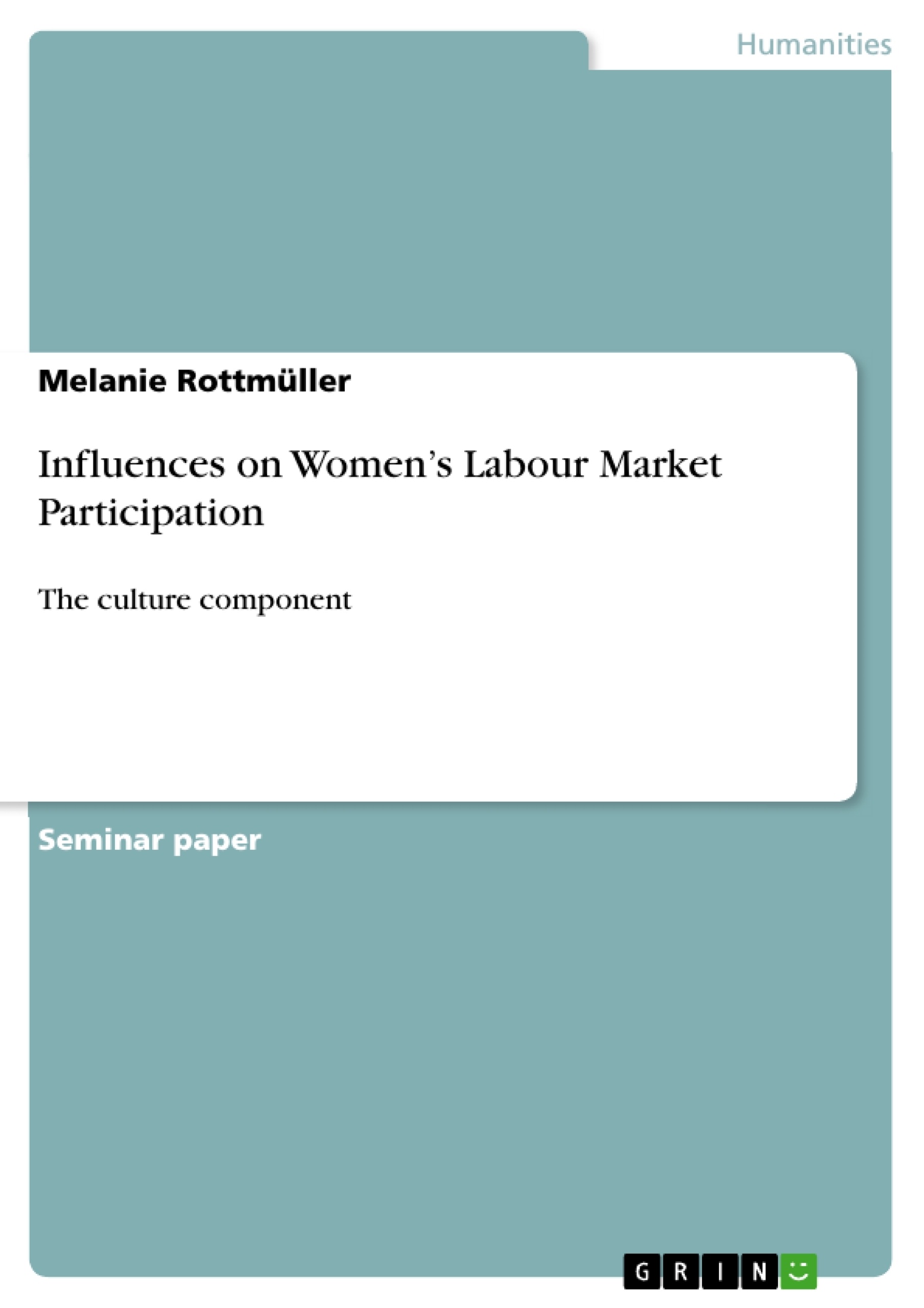This study analizes Labour market participation and related cultural components in three countries. In Germany a male breadwinner model is found. Men’s activity rate is much higher than the one of women. Reservations have to be made when speaking about a female part-time carer. The percentage of women working part-time is less than the half of women working full-time and women doing housework are even more than women working part-time. There is also some conflict towards the Dutch dual breadwinner/ dual carer model. The rate of women working part-time is in fact the highest in the Netherlands and also the percentage of men working part-time is higher than for Germany or even Finland, still there is no equal participation in the labour market and therefore no dual breadwinner model, at most a tendency towards. Lastly, Finland’s women are by far most integrated into the labour market when speaking of full-time employment, but speaking of full and equal integration of both sexes and therefore a dual breadwinner model is exaggerated. As regards attitudes, the total explained variance and homogeneity of factor gives some indication that there is convergence of attitudes which seems to increase when more “liberal” countries, younger respondents and women are concerned. A factor analysis showed that the importance of traditional family design is highest in Germany and least in the Netherlands, whereas affirmation of equal division of labour between the genders was highest in the Netherlands and lowest in Germany. Altogether, the analysis of attitudes (and the employment status) does with some reservations confirm the findings of Pfau-Effinger.
Inhaltsverzeichnis (Table of Contents)
- The Importance of Analysing Women’s Labour Market Participation
- The Influence of Culture on Women’s Labour Market Attainment
- Theory
- Preliminary theories including culture
- Pfau-Effinger’s (1996, 2000, 2005) Gender Culture Models
- Hypotheses, Methods and Data
- Theory
- Results
- Employment Status
- Attitudes towards gender roles
- The Relation of Employment Status and Attitudes
- Conclusion
Zielsetzung und Themenschwerpunkte (Objectives and Key Themes)
This study analyzes the influence of culture on women's labor market participation in Germany, Finland, and the Netherlands. The main goal is to understand how attitudes towards family and gender roles affect women's attainment in the labor market. The research focuses on the cultural guidelines that shape these attitudes and how they correspond to the different gender culture models presented by Pfau-Effinger (1996, 2000, 2005).- The impact of cultural values and norms on women's labor market participation.
- The relationship between attitudes towards family and gender roles and women's employment status.
- The application of Pfau-Effinger’s gender culture models to explain cross-national differences in women's labor market participation.
- The role of the welfare state in shaping gender relations and women's employment patterns.
- The influence of social bargaining processes on dominating gender arrangements.
Zusammenfassung der Kapitel (Chapter Summaries)
- The Importance of Analysing Women’s Labour Market Participation: This chapter introduces the topic of gendered labor markets and highlights the importance of analyzing women's participation. It discusses the role of institutions like the welfare state and the labor market in shaping women's entry into the workforce and points to the influence of cultural determinants on this process.
- The Influence of Culture on Women’s Labour Market Attainment: This chapter delves into the theoretical frameworks for explaining women's employment patterns, focusing on the role of culture. It reviews preliminary typologies that link welfare state policies with cultural norms, and then presents Pfau-Effinger's (1996, 2000, 2005) gender culture models, which are used to analyze the specific cases of Finland, Germany, and the Netherlands.
- Results: This chapter presents the findings of the study, focusing on the employment status of women, attitudes towards gender roles, and the relationship between these two aspects. It analyzes the differences in employment patterns across the three countries, explores the attitudes towards traditional family design and equal division of labor, and examines how these attitudes are connected to women's labor market participation.
Schlüsselwörter (Keywords)
The main keywords and topics explored in this study include: women's labor market participation, gender culture models, attitudes towards gender roles, family design, welfare state policies, social bargaining processes, cross-national comparisons, Finland, Germany, the Netherlands. The study uses quantitative data from the European Values Study (EVS) to analyze these themes.- Arbeit zitieren
- Melanie Rottmüller (Autor:in), 2007, Influences on Women’s Labour Market Participation, München, GRIN Verlag, https://www.grin.com/document/117430



